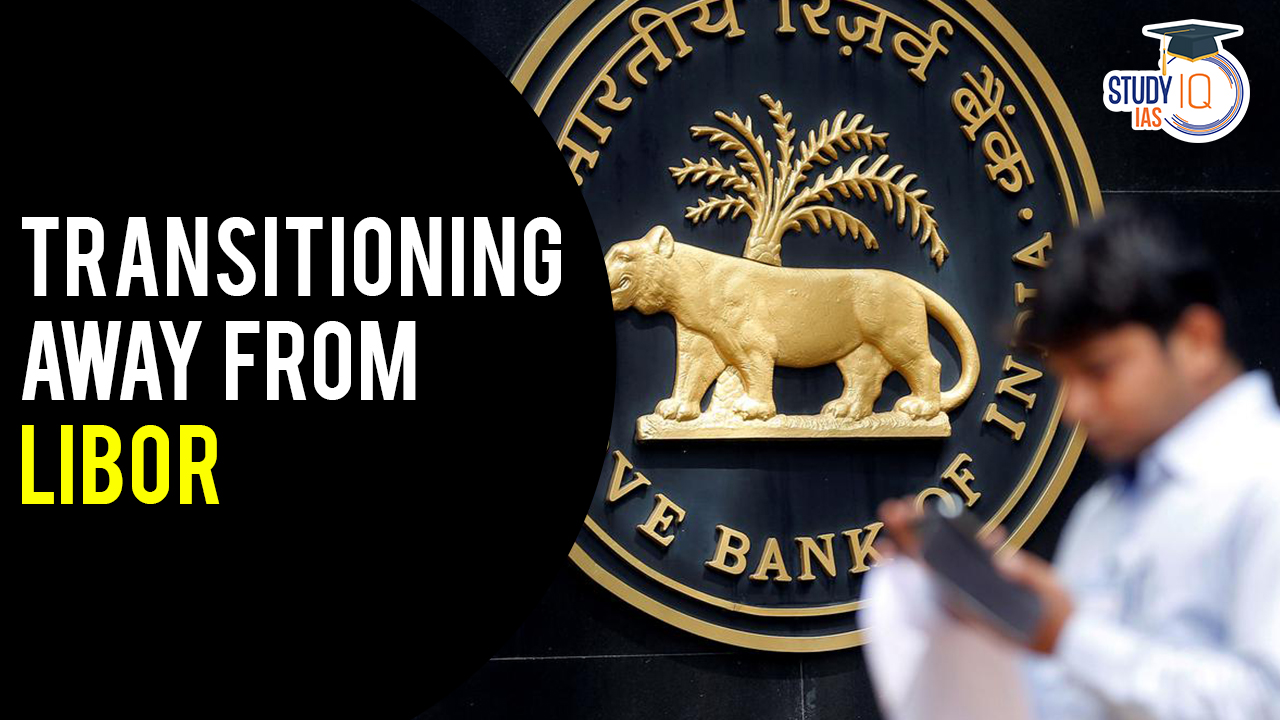Table of Contents
Context: Recently, the Reserve Bank of India (RBI) has advised banks and other RBI-regulated entities to ensure complete transition away from the London Interbank Offered Rate (LIBOR) from July 1.
What is LIBOR?
- LIBOR, stands for the London Interbank Offered Rate, is the benchmark interest rate at which major global banks lend to one another.
- It was established in 1986 and is administered by the Intercontinental Exchange (ICE), which asks major global banks how much they would charge other banks for short-term loans.
- LIOBOR is calculated for five major currencies for seven different maturities, the three-month U.S. dollar rate being the most common.
- Those five major currencies include the US dollar, Euro, British Pound, Japanese Yen, and Swiss Franc.
- The rates are published daily by the ICE and reflect the borrowing costs of banks.
Uses of LIBOR
- Lenders, including banks and other financial institutions, use LIBOR as the benchmark reference for determining interest rates for various debt instruments.
- It is also used as a benchmark rate for mortgages, corporate loans, government bonds, credit cards, and student loans in various countries.
- Apart from debt instruments, LIBOR is also used for other financial products like derivatives including interest rate swaps or currency swaps.
How LIBOR is calculated?
LIBOR is determined through a daily rate-setting process based on submissions from a panel of major banks in London. The following steps outline the general methodology:
- Selection of panel banks: The ICE, which administers LIBOR, selects a panel of major banks that meet specific criteria. These banks are typically active participants in the London money market and have a significant volume of transactions.
- Rate submissions: Each panel bank submits its estimated borrowing costs for various currencies and maturities to ICE.
- Trimming outliers: ICE eliminates the highest and lowest submissions for each currency and maturity to exclude any extreme or unrepresentative rates.
- Calculation methodology: ICE calculates LIBOR for each currency and maturity by taking the trimmed arithmetic mean (average) of the remaining submissions.
- Publication: Once the calculations are completed, ICE publishes the LIBOR rates for different currencies and maturities around 11:55 a.m. London time.
Why is LIBOR used as a benchmark rate globally?
- Historical acceptance: London has historically been a leading global financial center with a deep and liquid interbank market. As a result, LIBOR became a representative benchmark for the cost of short-term borrowing in the international banking system.
- Wide range of currencies and maturities: LIBOR is available in various currencies and different maturities, ranging from overnight to one year. This broad coverage allowed it to be used as a reference rate.
- Simplicity and ease of use: LIBOR is a readily available and widely published benchmark rate, making it convenient for market participants to reference and calculate interest rates based on it.
What are the controversies around LIBOR?
- Rate manipulation: One of the most significant controversies surrounding LIBOR was the revelation that some panel banks had manipulated their submissions to manipulate LIBOR rates.
- The phenomenon was particularly on display during the 2008 financial crisis when submissions were artificially lowered (amid the crisis).
- In 2012, Barclays admitted to the misconduct and agreed to pay $160 million in penalties to the U.S. Dept of Justice.
- The Wall Street Journal too had studied in May 2008 that several panelists were paying “significantly lower borrowing costs” than what other market measures were suggesting.
- Lack of underlying transactions: LIBOR’s determination relied on estimated borrowing costs provided by banks rather than actual transactions.
- Limited oversight and transparency: The governance and oversight of LIBOR were criticized for being insufficient. The rate-setting process was relatively opaque, and the methodology used by panel banks to make their submissions was not transparent.
- Inadequate reform: Following the rate manipulation scandal, there were calls for reforms to address the shortcomings of LIBOR. Efforts were made to strengthen LIBOR. However, critics contend that the reforms fell short in ensuring reliability and robustness.
What are the alternatives for LIBOR?
- In the transition away from LIBOR, alternative reference rates, such as the Secured Overnight Financing Rate (SOFR) in the United States and the Sterling Overnight Index Average (SONIA) in the United Kingdom, are being developed and promoted as replacements.
- SOFR is based on transactions in the U.S. Treasury repurchase market and reflects the cost of borrowing secured by Treasury securities.
- SONIA is based on actual overnight unsecured transactions in the sterling market of the U.K.
- Accordingly, in India, new transactions were to be undertaken using the SOFR and the Modified Mumbai Interbank Forward Outright Rate (MMIFOR), replacing MIFOR.
- The goal is to establish more robust and transparent benchmarks that are based on actual market transactions.


 Daily Quiz 03 July 2025
Daily Quiz 03 July 2025
 Dalai Lama Confirms He will have a Succe...
Dalai Lama Confirms He will have a Succe...
 List of Awards and Honours Received by N...
List of Awards and Honours Received by N...





















